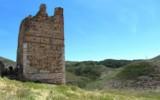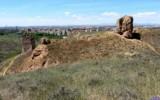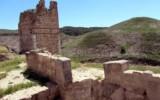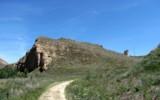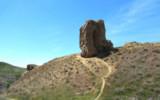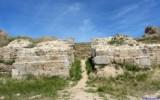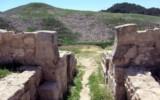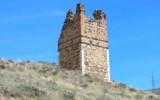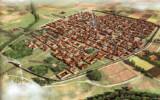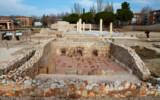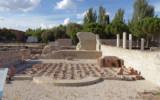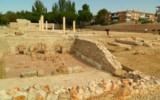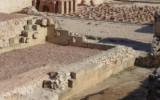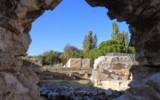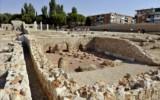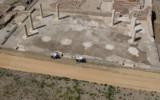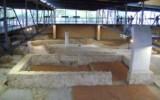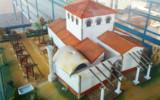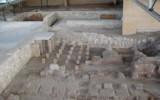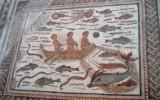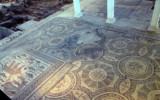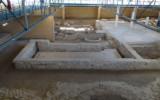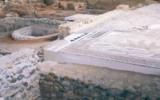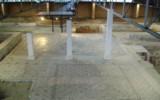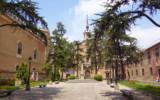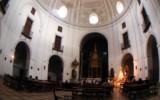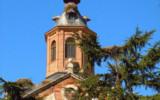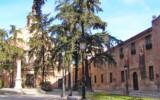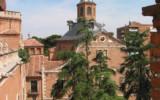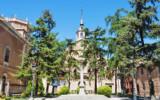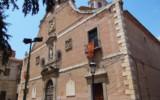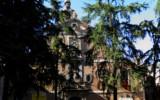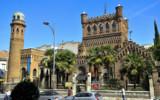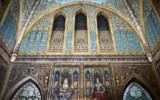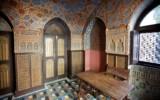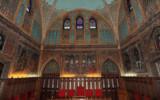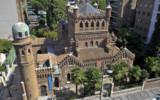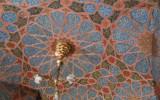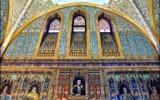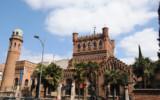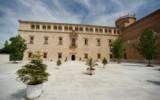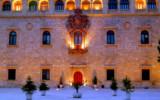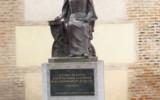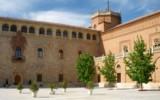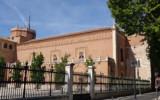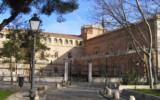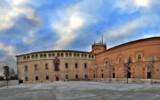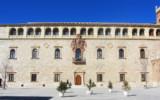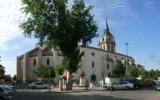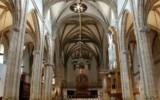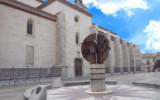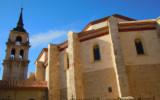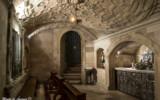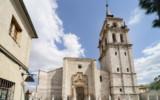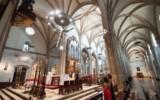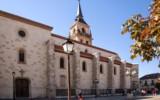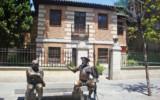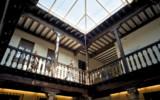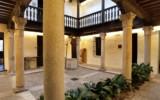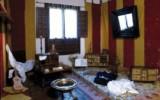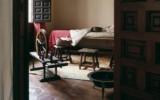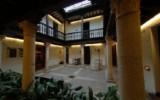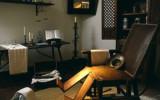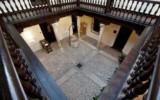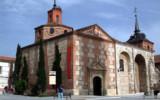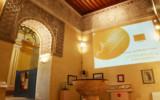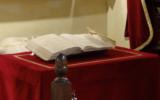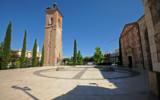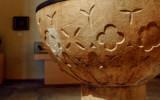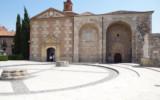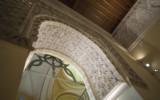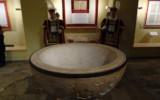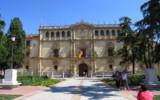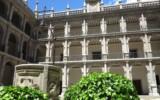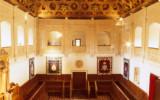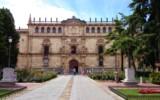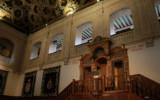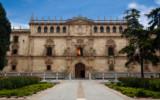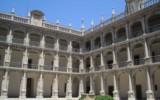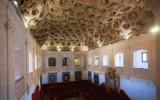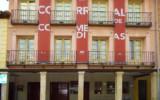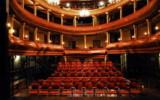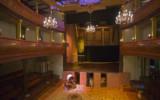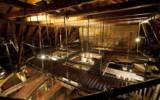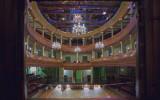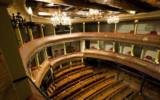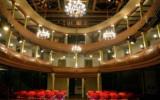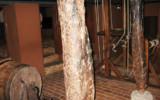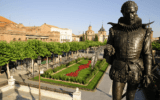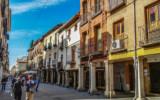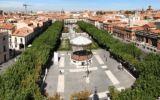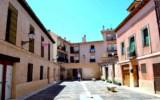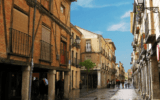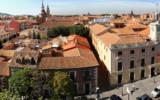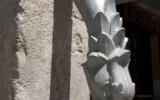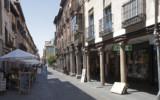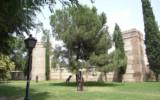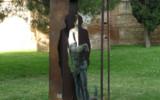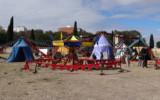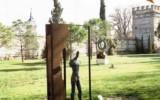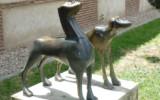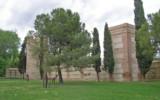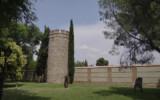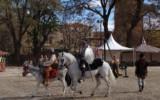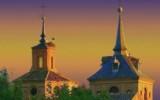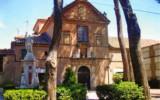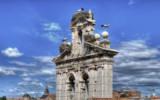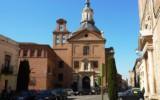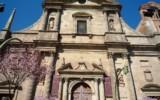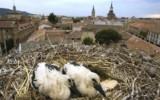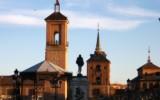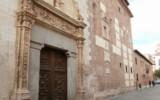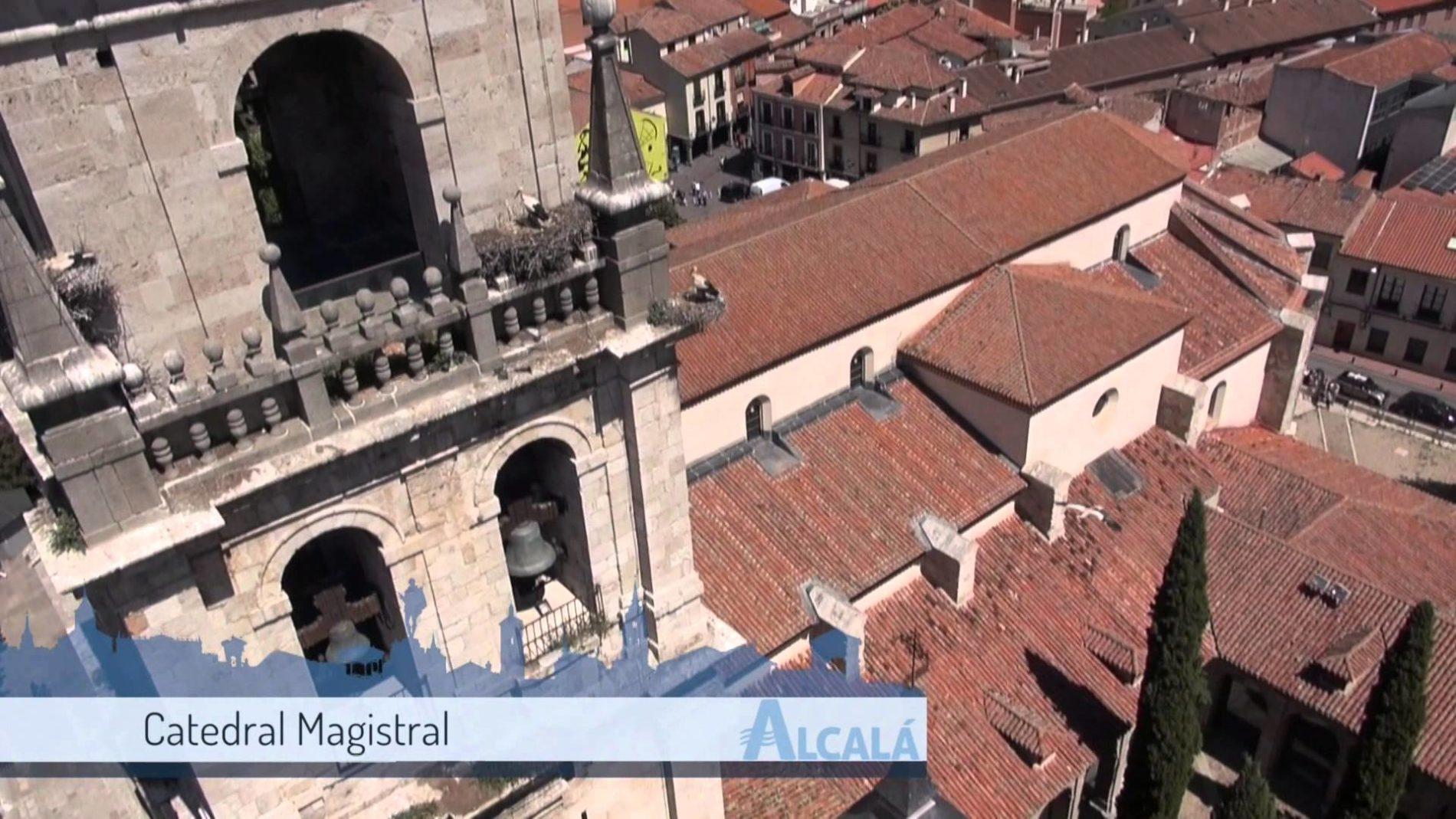What to see in Alcala de Henares (Madrid)
Alcalá de Henares is a city with a rich history which stretches back to Roman times. Some of the most significant cultures throughout Spanish history have left their mark on the city: Roman, Jewish, Moorish and Christian, leaving behind a legacy of historical treasures that will delight art, culture and history lovers.
Don’t miss this opportunity to travel back through time and relive the different eras that have shaped the Spain we know today.
Califal Al-Qalat Fortress
On the outskirts of Alcalá de Henares, only a few metres away from the settlement chosen by the Romans almost a millenium earlier, lies the ruins of the Arabic military fortress of Al-Qalat, from which the city’s name procedes and whose towers are still well-preserved. Making the most of its strategic postion between Ecce Homo hill – a natural defense since the Bronze Age – and the natural moat which the River Henares provides, this fortress was built by the Arabs around the 10th Century to fight off the advancing Christians.
Roman City of Complutum
Only a few metres away from Al-Qalat can we find Complutum, a Roman settlement dating back to 1 A.D. and where the city we now know as Alcalá de Henares began. Complutum was one of the most important Roman cities on the mainland, thanks to its strategic position in Hispania, and its remains are still reasonably well-preserved. During the visit to the site we will be able to contemplate various different aspects of the buildings, such as the monumental façade, streets and hydraulic infrastructures, the “Paredón del Milagro”, the civil basillica, the market or the termal baths.
Casa de Hippolytus
Surrounding Complutum is one of the city’s most important Roman symbols, the House of Hippolytus (Casa de Hippolytus in Spanish), a building constructed between the 3rd and 4th Century. It was the headquarters of the Colegio de Jóvenes, which fulfilled a ludic and educational purpose for the town’s young nobles. Its discovery was of vital importance in terms of finding out what the culture of that era was like, as it remains one of the few well-maintained examples of a Roman school for the wealthy youth of the city.
San Bernardo Monastery
A little further into the centre of town, we find San Bernardo Monastery, one of the best examples of the Baroque period in Spain that is still standing. This construction, dating back to 1618, houses 6 chaples and has the largest elliptical dome of its kind in the whole of Spain. Its façade was built in the classic complutense baroque style, combining brick as the main building material with stone for decorative purposes. We can find examples of this stone on the front of the building, in the central niche, on the large shields of the founder and on the written impost which runs across the whole façade.
Palace of Laredo
In another corner of the city we can find a true architectural splendour, rather unknown to some, which is the Palace of Laredo, currently the Cisneros International Centre for History Studies. Built at the end of the 19th Century, the building is a homage to the 3 cultures which lived side by side in Alcalá: Jewish, Arabic and Christian. Built in a Neogothic and Mudéjar style, this treasure transports us to a world full of concealed doors, trompe l’oeil, mirrors and stunning halls. A highlight is the Salón de Reyes (Kings’ Room), whose walls show the Castilian kings being watched over by the most important members of all the Spanish Monarchy, the Catholic Kings.
Archbishop’s Palace
Right in the centre of Alcalá lies one of the city’s most emblematic and historically significant structures, the Archbishop’s Palace. This building, whose construction began in the 13th Century, was created as a residence for the archbishops of Toledo and has been a witness to some of the most decisive moments in Spanish history. It was in one of its rooms where the first interview between Christopher Columbus and the Catholic Kings took place, which would lead to Columbus’ subsequent Conquest of America. It was also in this building where Juana la Loca gave birth to her son, the Emperor Fernando. In a small building, just a few metres from the palace, Queen Isabel gave birth to Catherine of Aragon, future queen of England.
Magisterial Cathedral
Alcalá is proud to be home to the only Magisterial Cathedral in the world, along with San Pedro de Lovaina in Belgium. Its name means that all of its canons had to be a magister, or a professor at the university. The construction of the cathedral commenced in 1497, on Cardinal Cisneros’ orders, at the site where the Saints Justo and Pastor’s martyrdom took place, to which the cathedral pays homage. They lost their lives due to their refusal to give up on their Christian faith.
Cervantes Birthplace Museum
If one person truly represents Alcalá de Henares, then that is none other than Don Miguel de Cervantes, author of Don Quixote and alcalaíno to boot. For this very reason, you can’t leave Alcalá without visiting the house in which he was born. Extraordinarily well preserved to this day, this beautiful house is a typical abode of the 16th Century, with all of the pertinent furniture and rooms of that era. This takes us back in time to see what life was like in the Golden Age. As well as this, in the house we can find a large bibliographic Cervantine collection in various different languages.
“Cervantes’ Universe” Exhibition Centre
Situated next to the emblematic Cervantes Square (Plaza Cervantes in Spanish), we find the Exhibition Centre, located in 2 chapels of the church where Cervantes was baptised. There, we can glance at Cervantes’ baptism certificate and a reproduction of the baptistery where he received the Holy Sacrament. In addition, this centre hosts a wide variety of temporary exhibitions which take place throughout the year.
University of Alcalá de Henares
If Alcalá owes its development and splendour as a cultural and literary city to anyone, then that figure is unquestionably Cardinal Cisneros, confessor to Isabel the Catholic Queen and founder of the University of Alcalá de Henares. Established in 1499, this emblematic university quickly became a centre for academic excellence, attracting academics and erudites from all over the country and bestowing the city with a renown which would lead to its growth and development and, in course, change the course of history.
The University of Alcalá de Henares reached a preeminent place among the Castilian universities of the Golden Age, having among its students such illustrious figures as Lope de Vega, Francisco de Quevedo and Pedro Calderón de la Barca.
Corral de Comedias
The Corral de Comedias in Alcalá is a unique building, since it is the oldest one of its kind in Spain. Its beginnings date back to the Spanish Golden Age, a time in which the work of some of the most illustrious men of letters in Spain were represented in corralas (courtyards) or neighbourhood patios to the delight of the whole town. One of the best examples to this day is the Corral de Comedias theatrical courtyard, which centuries later was covered to become a romantic theatre. Despite this, the building maintains the original structure of the corrala and even the typical patio well, now covered by the stalls.
The most important theatrical plays in Spain are performed here every year, as well as playing host to numerous important festivals such as the International Dramatic Arts Festival, Clásicos en Alcalá, or Alcine, the International Short Film Festival.
Historical Centre of Alcalá
Strolling through the historical old town of Alcalá de Henares is a real treat for history, art and architecture lovers. By walking down its medieval streets and its narrow cobbled streets, we can find traces of the 3 important cultures which have played a pivotal role in the development of the city – Jewish, Arabic and Christian. Few cities in Spain offer such a clear cultural differentiation in the architecture found in its respective neighbourhoods.
The arches, arcades and two-storey medieval-style houses in the Calle Mayor still bear a resemblance to what was the old Jewish Quarter. If we continue on to Calle de Santiago, we will recognise the Almanxara or old Moorish Quarter, which was partially knocked down to construct the San Bernardo Monastery. The rest of the city shows a clear Christian influence, especially thanks to its religious heritage, which covers everything from churches and convents, to monasteries and episcopal colleges.
Fortified Enclosure
Surrounding the Archbishop’s Palace we find an incredibly well-preserved fortified enclosure which formed part of the walls that were built to protect the medieval town centuries earlier. This wall once surrounded the whole of Alcalá, though currently the only remaining part is that of the Archbishop’s Palace and 16 of the 20 towers that it was thought to originally have.
Inside the walls lies the Huerta del Obispo, known for its jousts and tournaments between knights which take place during Cervantes Week. Just outside the wall, we find the Open Air Sculpture Museum, a permanent, public exhibition of contemporary art, with some 58 pieces of both figurative and abstract work.
Great Religious Heritage
Alcalá de Henares, due to its history, possesses one of the largest collections of religious patrimony in all of Spain. This enormous heritage includes the Carmelitas Descalzas Convent, founded by Santa Teresa de Jesús, and San Ignacio de Loyola College, where the current high priest, Pope Francis, studied.
The city is full of churches, convents and monasteries, which give a home to another of the city’s distinctive symbols, the stork. By following the so-called Route of the Storks (Ruta de las Cigüeñas in Spanish), visitors can enjoy seeing some of the most emblematic buildings in the city and its beautiful “guests”, whose nests can be seen on all the bell towers in the city.
For more information on the stunning city of Alcalá de Henares, its local festivities and its countless historical treasures, check out this exciting video. We’re sure you’ll be as captivated as we are by it.


